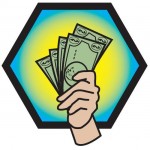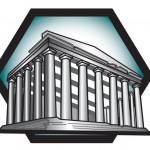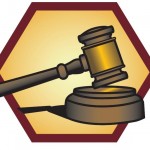 Although The Civic Mirror does not directly connect to the middle school curriculum for ancient history and/or medieval times, it could most definitely be used to help students compare and contrast the social, political, and economic systems and structures between then and now.
Although The Civic Mirror does not directly connect to the middle school curriculum for ancient history and/or medieval times, it could most definitely be used to help students compare and contrast the social, political, and economic systems and structures between then and now.
The two modules that have been developed for The Civic Mirror are the U.S. and Canadian modules. More modules will be developed in the future, but, for now, this idea could be an exciting option for middle school ancient or medieval history teachers wanting to utilize the Civic Mirror.
COMPARING ANCIENT or MEDIEVAL SOCIETIES WITH MODERN SOCIETY
With this idea, you could stretch the 10 activities outlined in the “Civic Mirror in 10 Days” scope and sequence over a period of 4-10 weeks, matching specific studies of various aspects of ancient or medieval societies with Civic Mirror events in order to allow for modern-day comparisons.
What I like about this is it would get the students thinking about their world today, how it compares/contrasts to ancient or medieval societies, and it would allow students to understand – through experiential reflection – just how far civilization has (and hasn’t) advanced from those times.
What I also like about this idea is that history curricula are usually grounded in the notion that students will better understand the world today by studying the world as it was. This unit idea brings that desired cognitive leap to the foreground, providing students with a better understanding of how society works today (by experiencing a simulated version of it with The Civic Mirror), which will in turn provide them with a better ability to understand the various components of historic societies too.
To illustrate this, we have provided some essential questions that students could be asked about ancient and/or medieval societies before, during, and after their participation in each of The Civic Mirror’s events. Before reading the examples that follow, open up and have handy “Civic Mirror in 10 Days.”
 SOCIAL IDENTITY ~ When the students create their simulated country’s identity, you could ask some inquiry questions about who were the ________ people (e.g. Roman, medieval, etc.)? What kind of communities did they live in? Did they view themselves as citizens, like we do, or something different? How is our nation today similar and different to the ancient/medieval society we’re studying? Etc.
SOCIAL IDENTITY ~ When the students create their simulated country’s identity, you could ask some inquiry questions about who were the ________ people (e.g. Roman, medieval, etc.)? What kind of communities did they live in? Did they view themselves as citizens, like we do, or something different? How is our nation today similar and different to the ancient/medieval society we’re studying? Etc.
 CHOOSING LEADERS ~ When students elect their government using the modern democratic procedures outlined in the Civic Mirror Manuals, students could be asked … How were leaders chosen in ancient or medieval society? How are leaders elected today? What method is better, more fair? Etc.
CHOOSING LEADERS ~ When students elect their government using the modern democratic procedures outlined in the Civic Mirror Manuals, students could be asked … How were leaders chosen in ancient or medieval society? How are leaders elected today? What method is better, more fair? Etc.
PROPERTY OWNERSHIP ~  When your students bid to own their country’s property in the Hex Auction (the last pre-game event), you could ask them … Who were the landowners in ancient/medieval society? How did they come to own their land? Was everyone allowed to own land and property? How is this different and similar to your simulated country? To our country today? Etc.
When your students bid to own their country’s property in the Hex Auction (the last pre-game event), you could ask them … Who were the landowners in ancient/medieval society? How did they come to own their land? Was everyone allowed to own land and property? How is this different and similar to your simulated country? To our country today? Etc.
 GOVERNANCE ~ When the student politicians work to pass laws and set policies in the Government Event, you could ask … How were laws made and enforced in ancient/medieval ages? Who was allowed to vote and participate? How are things similar/different in our society today? Etc.
GOVERNANCE ~ When the student politicians work to pass laws and set policies in the Government Event, you could ask … How were laws made and enforced in ancient/medieval ages? Who was allowed to vote and participate? How are things similar/different in our society today? Etc.
 LAW & PUNISHMENT ~ When the students are using their own impartial and democratic court in the Civic Mirror, you could ask them … Who determined guilt and innocence in ancient/medieval times? Were their powers limited or unlimited, and what dangers, threats, and/or benefits did the people in those ages face as a result? How are things similar/different today? What’s better? Etc.
LAW & PUNISHMENT ~ When the students are using their own impartial and democratic court in the Civic Mirror, you could ask them … Who determined guilt and innocence in ancient/medieval times? Were their powers limited or unlimited, and what dangers, threats, and/or benefits did the people in those ages face as a result? How are things similar/different today? What’s better? Etc.
CURRICULUM COVERAGE & INTEGRATION IDEAS
If you’re wondering how you could integrate The Civic Mirror into your course and fit all of the required readings into your time line, please read our Teaching with The Civic Mirror Overview for suggestions and ideas.
